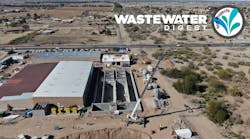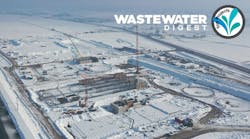Cost: $2.3 million
Location: Jacksonville, Florida
Year: 2020-12-31
Size: 100 gpm
Owner: JEA
Designers: CDM Smith
Contractor: N/A
Located in Jacksonville, Florida, JEA is the eighth largest community-owned utility in the U.S. and it is Floridaʼs largest community-owned utility that provides water, sewer and power services to more than 400,000 customers throughout the Jacksonville area. JEA embarked on a $2.3 million budget project investigating potable reuse as an option to meet future water demands, and ultimately achieved those water needs goals by purifying reclaimed water as an alternative water supply.
“As JEA continues to protect the water resources of the region and equalize demand across wet and dry seasons, alternative water supply is needed to meet future demands,” said Ryan R. Popko, JEA consulting engineer. “Potable reuse is an option that provides a multitude of benefits, including aquifer sustainability, increased resiliency and water surety.”
The initial phase was completed in 2019 and consisted of pilot testing ozone (O3), followed by biological aerated filters (BAF), and an advanced oxidation process (AOP). That was compared to ultrafiltration (UF), followed by reverse osmosis (RO) and AOP. These were set up at two different water reclamation facilities with significantly different source water qualities: one with a predominantly domestic and commercial customer base and the other, which had significant industrial flows.
The pilot discovered the UF/RO/AOP system produced higher quality water compared to the O3/BAF/AOP system, which exhibited more reliable operation and was less subject to variations in source water quality. Based upon these water quality results and other factors, including operational flexibility and life cycle costs, UF/RO/AOP was selected for future phases of
the program.
Future phases include demonstration-scale testing followed by full-scale implementation. By directly comparing the pilots of these purification systems and demonstrating the safe and reliable application of purification technology, JEA paved the way for the implementation of potable reuse in Florida and beyond.
JEAʼs traditional water supplies are met through groundwater withdrawals from the Floridan aquifer and the current water use permit extends past the year 2030. As JEA approaches the limit of the consumptive use permit, alternative sources of water will be needed to meet future demands.
Currently, JEA owns and operates 11 water reclamation facilities (WRF) at advanced nutrient removal levels for return to the St. Johns River, and has built one of the largest interconnected reclaimed water systems in Florida, serving conventional reclaimed irrigation water in areas of new growth.
Comparison of the two purification systems was necessary because the UF/RO based system has become the preferred potable reuse application in the western U.S., while the O3/BAF system has been successfully employed in areas on the East Coast, including Georgia and Virginia.
Throughout piloting, the team had the ability to test a number of different conditions, including coagulants and their dosages, clarification rates, O3 to total organic carbon ratios, BAF column media and filtration rates, filter columns in parallel or series, UF module manufacturers, UF and RO flux rates, advanced oxidation chemicals, and UV dosage.
Before piloting, a detailed operating test protocol was developed to outline specific set-points and conditions for each week of testing. The plan was detailed, but also allowed for process changes based on monitoring results and changes in source water quality.
“I will say one of the most important parts of the project was a detailed and thorough operating test protocol,” Popko said. “We were ambitious in not only piloting two different purification processes side-by-side but also piloting at two different WRFs.”


